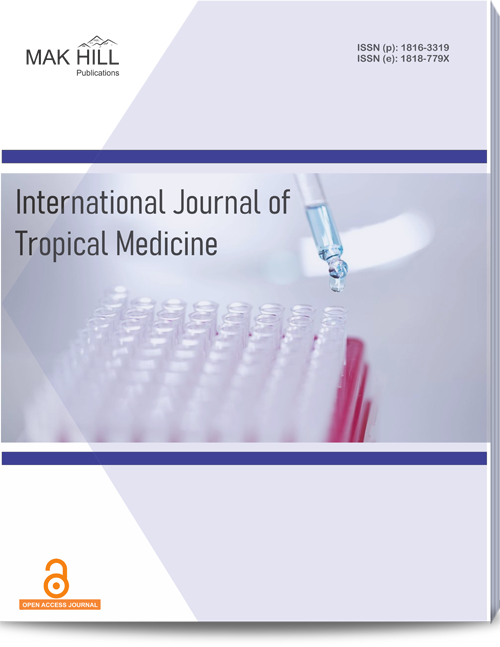
International Journal of Tropical Medicine
ISSN: Online 1818-779XISSN: Print 1816-3319
159
Views
4
Downloads
Abstract
Rosai dorfman disease (RDD) is an idiopathic proliferative disorder of histiocytes which frequently affects lymph nodes but occasionally can occur at extra nodal sites also. Sinus histiocytosis with massive lymphadenopathy (SHML) are the hallmarks of RDD. About 50 years old woman P1L1 had generalized weakness, loss of appetite and lower abdominal pain for 3 months. An ultrasound showed an irregular polypoidal hypoechoic cervical lesion (3.4×2.8×4 cm) with right parametrial and pelvic side wall extension, right distal ureteric infiltration, and obstructive hydroureteronephrosis, suggesting CA Cervix IIIB. She was referred from a peripheral hospital. On clinical examination, abdomen was soft with no lump, discomfort or free fluid. Per vaginal examination, a firm 3×3 cm non‐tender mass was felt separately from cervix fixed to right lateral wall. Rectal examination verified vaginal examination findings, bilateral parametria, rectal mucosa free. Her tumor markers were CA 125: 34.7 IU mL-1, CA 19‐9: 2.1U mL-1, CEA: 6.5 ng mL-1. CT IVP revealed moderate to severe right‐sided hydroureteronephrosis with distal ureteric encasement/compression by massive pelvic mass (7.2×7.1×8.1 cm). Extra‐nodal RDD is uncommon. Compared to the more prevalent nodal variants, which typically occur in younger males, extra‐nodal RDD is more common in middle‐aged women. It is unclear what causes this uncommon illness. Clinically and radiologically, it is frequently misdiagnosed as cancer. The best course of action is still unknown. A high index of diagnostic awareness is needed to identify the disease when lymphadenopathy is absent.
How to cite this article:
Arunashis Mallick, Arunava Roy, Anik Ghosh, Atanu Sarkar, Vishal Seth and Jaydip Bhaumik. Extranodal Rosai Dorfman Disease Simulating Locally Advanced Cervical Cancer: A Diagnostic Enigma.
DOI: https://doi.org/10.36478/10.59218/makijtm.2023.117.120
URL: https://www.makhillpublications.co/view-article/1816-3319/10.59218/makijtm.2023.117.120